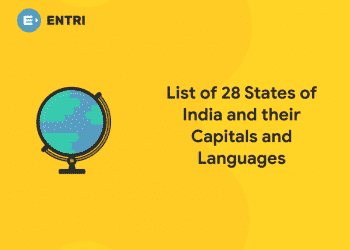Table of Contents
Hepatitis is a common disease as one of the ways one can get hepatitis is as a side effect from medications, drugs, toxins, and alcohol. Hepatitis refers to an inflammatory condition of the liver. It affects the liver a lot and can often lead to fatal consequences. World Hepatitis Day is celebrated on July 28th every day to spread awareness on the dangers of this condition and to encourage people to vaccinate against as there are still people who believe vaccines are bad.

History of World Hepatitis Day 2023
World Hepatitis Day is recognized annually on July 28th, the birthday of Dr Baruch Blumberg (1925–2011). Dr Blumberg discovered the hepatitis B virus in 1967, and 2 years later he developed the first hepatitis B vaccine. These achievements culminated in Dr Blumberg winning the Nobel Prize. Organizations around the world, including WHO and CDC, commemorate World Hepatitis Day to raise awareness of the problem of viral hepatitis, which impacts more than 325 million people worldwide.
World Hepatitis Day 2023 Date – July 28
World Hepatitis Day 2023 is celebrated on July 28, 2023, Friday.
World Hepatitis Day 2023: The Effects
According to WHO, ‘325 million people are living with viral hepatitis B and C globally’. A total of 9 lakh people die every year due to hepatitis B virus infection. Hepatitis is an inflammation of the liver that can cause a series of health problems often leading to death. There are five main strains of the hepatitis virus A, B, C, D and E. Hepatitis B and C combined are the most common cause of deaths, accounting to 1.3 million lives lost each year. It is alarming to know that only 10 % of people living with hepatitis B and 19% living with hepatitis C know the status of their Hepatitis as mentioned by the World Health Organization (WHO).
World Hepatitis Day 2023: The Causes
Hepatitis A and E are mostly caused by the intake of contaminated food and water. Hepatitis B, C and D usually occur after coming in contact with infected blood and body fluids.
According to one of the studies conducted by WHO, an estimated 4.5 million premature deaths can be prevented in low- and middle-income countries by 2030 by vaccination, diagnostic tests, medicines and education campaigns. WHO’s global hepatitis strategy, ratified by all WHO member states, aims at reducing new hepatitis infections by 90% and deaths by 65% between 2016 and 2030.
World Hepatitis Day Theme 2023
The theme for world Hepatitis Day 2023 will announce soon!
As most international days, even this day has a theme and for this year its “Hepatitis can’t wait”. With a person dying every 30 seconds from a hepatitis-related illness – even in the current COVID-19 crisis – we can’t wait to act on viral hepatitis
World Hepatitis Day Facts
- 1,100,000 deaths per year are caused by Hepatitis B and C infections.
- 9,400,000 people are receiving treatment for chronic hepatitis C virus infection.
- 10 % of people who have chronic infection with hepatitis B virus are diagnosed, and 22% of them receive treatment.
- Hepatitis C is a liver disease caused due to hepatitis C virus (HCV): the virus is capable of causing both acute and chronic hepatitis, varying in severity from a mild illness lasting a few weeks to a serious, lifetime illness. It is a major cause of liver cancer.
- 42 % of children, globally, have access to the birth dose of the hepatitis B vaccine
- Hepatitis C virus is a bloodborne virus: It is mostly caused by getting infected through exposure to small quantities of blood. Reasons such as injection drug use, unsafe injection practices, unsafe health care, transfusion of unscreened blood and blood products, and sexual practices often leading to exposure to blood.
- An estimated 71 million people have chronic hepatitis C virus infection globally.
- Most of those who are chronically infected will develop cirrhosis or liver cancer.
- WHO estimated that in 2016, approximately 4 lakh people died of hepatitis C, mostly from cirrhosis and hepatocellular carcinoma (primary liver cancer).
- Antiviral medicines are capable of curing more than 95% of persons with hepatitis C infection, therefore reducing the risk of death from cirrhosis and liver cancer, but access to diagnosis and treatment remains low.
- Till now, no effective vaccine against hepatitis C has been made; nevertheless, research is being carried out.
Hepatitis may not be that big of a buzz now but it is still silently working its way through many lives and we must stop it before it becomes worse. Do check out other important days in July. Stay safe keep learning and have a nice day! 🙂














